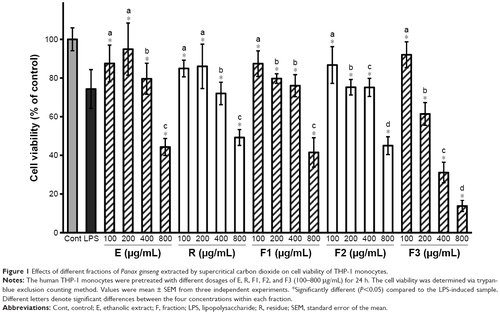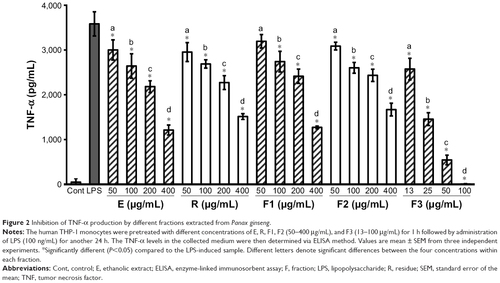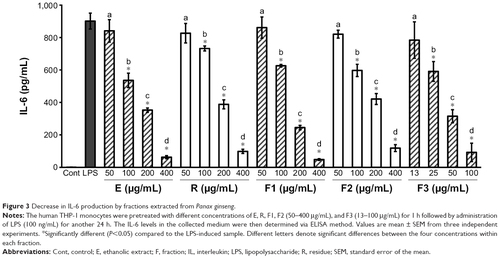Figures & data
Table 1 Half maximal effective concentration (EC50) values from Panax ginseng C.A. Meyer extract and fractions for antioxidative properties
Table 2 Pearson’s product moment correlation analyses between antioxidant ability, anti-inflammatory ability, and contents of ginsenosides
Figure 1 Effects of different fractions of Panax ginseng extracted by supercritical carbon dioxide on cell viability of THP-1 monocytes.
Abbreviations: Cont, control; E, ethanolic extract; F, fraction; LPS, lipopolysaccharide; R, residue; SEM, standard error of the mean.

Figure 2 Inhibition of TNF-α production by different fractions extracted from Panax ginseng.
Abbreviations: Cont, control; E, ethanolic extract; ELISA, enzyme-linked immunosorbent assay; F, fraction; LPS, lipopolysaccharide; R, residue; SEM, standard error of the mean; TNF, tumor necrosis factor.

Figure 3 Decrease in IL-6 production by fractions extracted from Panax ginseng.
Abbreviations: Cont, control; E, ethanolic extract; F, fraction; IL, interleukin; LPS, lipopolysaccharide; R, residue; SEM, standard error of the mean.

Table 3 Therapeutic index (TI: CC50/EC50) of extract and fractions in THP-1 cells for anti-inflammatory effect on TNF-α and IL-6 production
